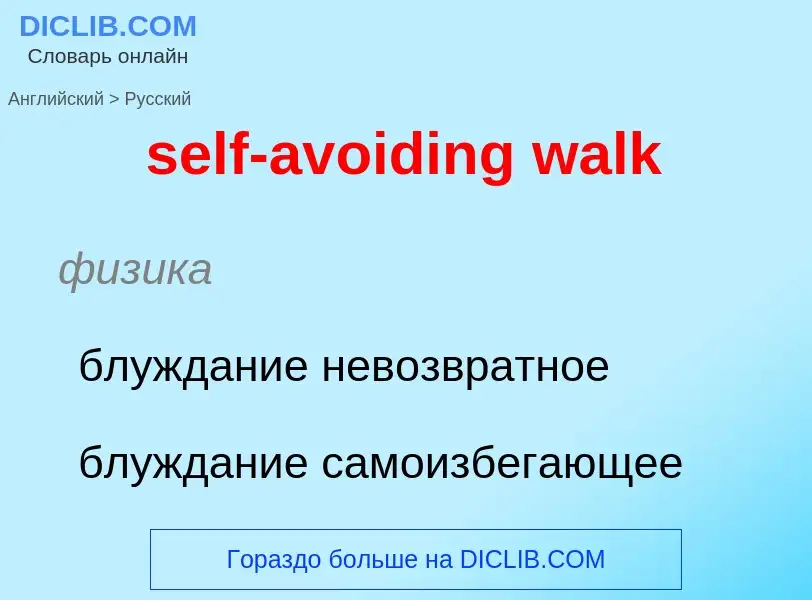Translation and analysis of words by ChatGPT artificial intelligence
On this page you can get a detailed analysis of a word or phrase, produced by the best artificial intelligence technology to date:
- how the word is used
- frequency of use
- it is used more often in oral or written speech
- word translation options
- usage examples (several phrases with translation)
- etymology
self-avoiding walk - translation to russian
физика
блуждание невозвратное
блуждание самоизбегающее
[selfkən'tempt]
существительное
общая лексика
презрение к самому себе
Wikipedia
In mathematics, a self-avoiding walk (SAW) is a sequence of moves on a lattice (a lattice path) that does not visit the same point more than once. This is a special case of the graph theoretical notion of a path. A self-avoiding polygon (SAP) is a closed self-avoiding walk on a lattice. Very little is known rigorously about the self-avoiding walk from a mathematical perspective, although physicists have provided numerous conjectures that are believed to be true and are strongly supported by numerical simulations.
In computational physics, a self-avoiding walk is a chain-like path in R2 or R3 with a certain number of nodes, typically a fixed step length and has the property that it doesn't cross itself or another walk. A system of SAWs satisfies the so-called excluded volume condition. In higher dimensions, the SAW is believed to behave much like the ordinary random walk.
SAWs and SAPs play a central role in the modeling of the topological and knot-theoretic behavior of thread- and loop-like molecules such as proteins. Indeed, SAWs may have first been introduced by the chemist Paul Flory in order to model the real-life behavior of chain-like entities such as solvents and polymers, whose physical volume prohibits multiple occupation of the same spatial point.
SAWs are fractals. For example, in d = 2 the fractal dimension is 4/3, for d = 3 it is close to 5/3 while for d ≥ 4 the fractal dimension is 2. The dimension is called the upper critical dimension above which excluded volume is negligible. A SAW that does not satisfy the excluded volume condition was recently studied to model explicit surface geometry resulting from expansion of a SAW.
The properties of SAWs cannot be calculated analytically, so numerical simulations are employed. The pivot algorithm is a common method for Markov chain Monte Carlo simulations for the uniform measure on n-step self-avoiding walks. The pivot algorithm works by taking a self-avoiding walk and randomly choosing a point on this walk, and then applying symmetrical transformations (rotations and reflections) on the walk after the nth step to create a new walk.
Calculating the number of self-avoiding walks in any given lattice is a common computational problem. There is currently no known formula, although there are rigorous methods of approximation.

![sequential Monte Carlo]] sequential Monte Carlo]]](https://commons.wikimedia.org/wiki/Special:FilePath/Saw60 new.gif?width=200)
